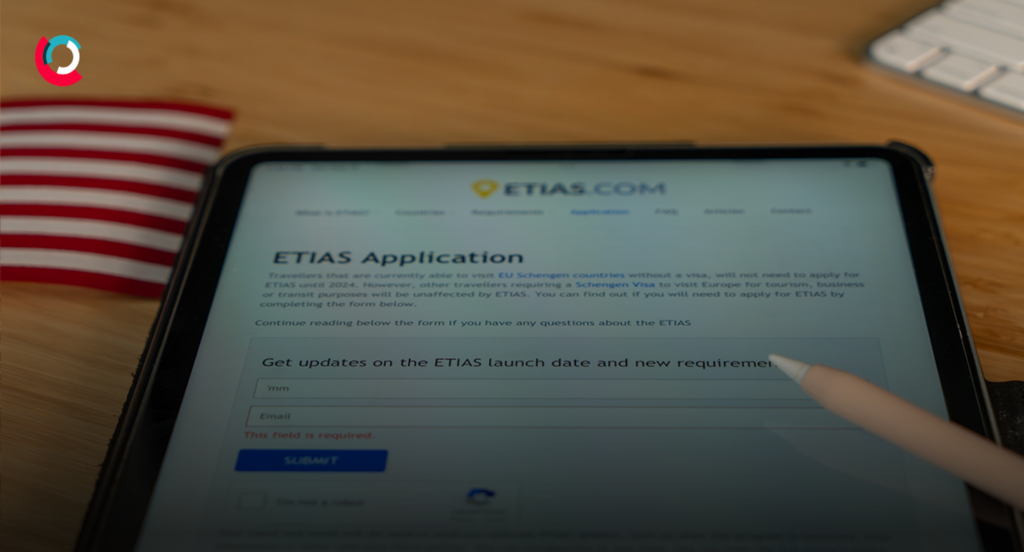by Claudia Gualdi
Most travellers need or will soon need to obtain electronic travel authorizations before travel. What are these systems and how do they work? Here’s everything you need to know.
Electronic Travel Authorizations (ETAs) are automated systems that verify the eligibility of visitors to enter a country without a visa. These also help determine whether visitors are linked to terrorism, cross-border crimes, illegal immigration or public health risks. The scope is to increase national security and make entry checks and procedures smoother upon arrival.
The US, Canada, Australia, and South Korea already ask travellers eligible for visa-free entry to get pre-travel authorizations. However, applying for an ETA will become a duty for more travellers in 2024. Here’s all you need to know about them.
First, it’s important to clarify that an ETA is not an E-visa.
Travellers subject to visa requirements do not need to apply for an ETA. And most visa-exempted foreign nationals must apply for an ETA – or will need it very soon. An E-Visa is typically valid for 30-60 days for a single entry, while an ETA grants multiple entries through a longer period of time.
The EU Travel Information and Authorisation System (ETIAS)
The European Union’s ETIAS system has been the most chatted in the past years, not only because it represents a big step towards Europe’s enhanced security border controls, but also because of its delay.
Initially expected in early 2022, the launch has instead been delayed due to the COVID-19 pandemic and other headwinds and was set for early 2024. However, in late September media articles reported that the system’s launch would be further delayed until 2025. But don’t worry, if you’re among the 60 eligible nationalities, you don’t need to apply for an ETIAS until at least January 2024.
The ETIAS will cost around EUR 7, except for some travellers who will not need to pay the fee. Travellers will likely have their applications processed within minutes and confirmed by email. Make sure to keep your ETIAS application number for future reference, and bring it with you upon arrival, together with the same travel document used for the application.
New Entry/Exit system: EES
In addition to the ETIAS, non-EU nationals travelling to the European Union without visas or on short-stay Schengen visas (up to 90 days within 180 days) will be required to use the new Entry/Exit System (EES). This automated IT system will register non-EU nationals each time they cross the external borders of European countries or when they are denied entry. The EES will replace passport stamping and will contribute to smooth border control procedures for arrivals. However, the EES has been continuously postponed alongside the ETIAS. It will probably be introduced after the Paris Olympics games in the Summer.
If you’re not eligible for the ETIAS, and therefore not allowed to enter the Schengen area without a visa, we highly recommend you apply for a regular Schengen visa as soon as possible. Long waiting times to get an appointment and lengthy processing times, besides the complex application requirements, continue to be reportedly problematic for those who need to enter the Schengen Area.
The UK ETA
The post-Brexit has caused quite a stir in terms of travel requirements. Among the latest changes in travel rules, travellers eligible for visa-free entry to the UK will soon be required to apply for an ETA before departure.
Similarly to other electronic authorizations, the ETA will be released via mail once the application is approved and will cost POUNDS 10. The exact launch date has not yet been announced as of October 2023.
However, there are some exceptions. If you plan to travel to the UK with a Qatari ordinary passport on or after 15 November 2023, you will be eligible to apply for an ETA from 25 October 2023. Nationals of Bahrain, Jordan, Kuwait, Oman, Saudi Arabia or the United Arab Emirates travelling to the UK on or after 22 February 2024 will be able to apply from 1 February 2024.
Israel’s MAROM System
Israel was just the latest country to announce the launch of Marom, a new Electronic Travel Authorization system about which few details are yet known. The platform should become fully operational in May 2024. It will allow foreign nationals, including US citizens residing in the West Bank, to use that system for travel to and through Israel.
Do ETA systems secure travellers’ peace of mind?
Not really. Holding a valid ETA doesn’t necessarily guarantee the automatic right of entry to a destination country. When you arrive, border officials will ask you to meet other entry conditions, and you could be denied entry.
Automated systems will shorten entry procedures and make them safer. They will enable authorities to identify travellers illegally staying in the country or those travelling with fake identities and passports. Find out how Riskline reports on the latest entry requirements, including future ETA systems.
